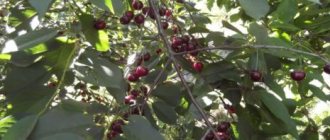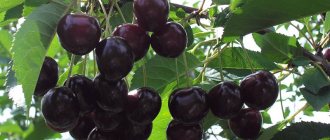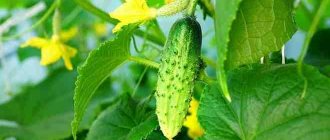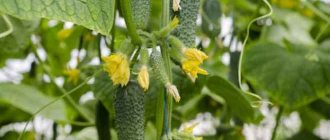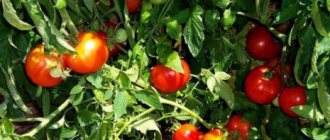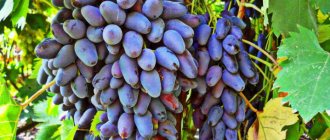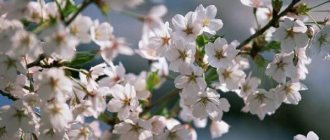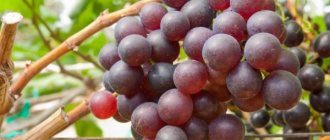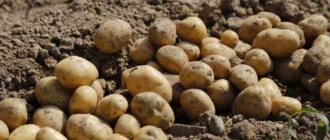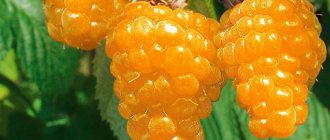Varieties and description of the Melitopol variety
Apricot is divided into many varieties and varieties. The most popular Melitopol subspecies are: early, late, radiant. They have different ripening periods and fruiting periods.
Early
The mother variety of all other varieties of Melitopol apricot. The tree is of medium height, does not grow higher than 2.5 m. Self-fertile, high yield, up to 60 kg per plant. The fruits are oval in shape, light orange in color, the flesh is soft, juicy, and sweet. The stone is brown and easily separated from the pulp.
Harvesting takes place in mid or early July. It all depends on the growing region. Early apricot is suitable for cultivation throughout Russia and is frost-resistant. The tree is immune to bacterial canker and partially to moniliosis.
Important! Fruiting begins 5-6 years after planting.
Late
Less common than the early variety. The tree is medium-sized, flowering begins at the end of June. Later, bright yellow fruits with a slight pink blush are formed, weighing up to 65 g. Larger individual fruits are also found. The stone is easily separated from the pulp. Apricot is self-fertile, fruiting begins in the 3-4th year of the growing season. The crown is spherical, thickened, and requires regular pruning and thinning.
Radiant
Low-growing tree, early ripening, self-fertile. Produces medium-sized fruits, weighing up to 65 g. They are yellow-orange in color. The pulp is orange, juicy, sweet, and easily separates from the seed. Productivity more than 50 kg per tree. Apricots tolerate transportation well and have a good presentation. The winter hardiness of the wood is average, suitable for growing in areas with a mild climate. Harvesting takes place at the end of July or beginning of August.
Reviews
The author can share his own experience of growing Melitopol early apricot. Having planted two seedlings brought from an exhibition in Melitopol in his dacha in eastern Ukraine, Lugansk region in 1995, ten years later he received three buckets from each tree. Having no knowledge of agricultural technology at that time, the author relied on the experience of his neighbors.
Fortunately, everything worked out well. Already three years after planting (by the way, the seedlings were two years old), I received the first fruits in the amount of about twenty pieces. The excellent-tasting berries ripened slightly later than stated in the description. Usually this happened no earlier than the first ten days of July, and sometimes in mid-July. But this did not diminish the joy of family members from the rich harvest. At that time, the author did not know many of the details of growing and caring for apricots, so sometimes he made mistakes.
For example, due to the failure to form the crown in a timely manner, his trees managed to grow up to four meters, and their crowns became quite dense. This led to the loss of part of the harvest. I had to turn to an experienced neighbor for help, who helped, as far as possible, correct the shape of the crown and thin it out.
The result was not slow to appear - the very next year - pruning was carried out in early spring and then carried out regularly - the tree responded with an increase in yield and an increase in the size of the berries. Fortunately, the author did not neglect autumn and spring sanitary and preventive measures. He didn’t call them that then—he just did it like everyone else. As a result, for 14 years the trees did not get sick even once.
General characteristics of apricot
The characteristics of apricot tell about the growing region, yield and transportability. Only after studying these qualities should you decide whether to plant a tree on your site.
Growing regions and ripening period
Melitopol varieties are suitable for growing in temperate and southern climates. Certain varieties can be planted in the north, but for this it is necessary that the plant has increased frost resistance.
The period of fruit ripening also varies depending on the variety. Early varieties usually ripen in 70 days, average ones in 90-100 days.
Characteristics of fruits and their purpose
Melitopol apricots are famous for their fruits. They are very tasty, sweet, and contain a large amount of useful minerals and nutrients. They have an average size of 50 to 70 g. Color varies from bright yellow to yellow-orange with blush. The seeds are easily separated from the pulp.
You can use fruits to make homemade jam, juice, compote, jam. Early varieties do not last long, so it is recommended to process them almost immediately. Apricots are also often canned whole. The radiant variety is suitable for transportation and sale.
Productivity and transportability
The productivity of Melitopol apricot is high. The tree is self-fertile and independently forms the maximum number of ovaries for fruit. It is possible to remove up to 60 kg of fruit from one tree.
Early varieties do not tolerate transportation very well; it is recommended to process them immediately. Radiant and late apricots can be stored for at least 2 months in a cool place. They are transportable, have an excellent presentation, and sell quickly.
ADVANTAGES AND DISADVANTAGES
Apricots “Melitopol Early” and “Melitopol Late” have a significant number of advantages, the main ones being:
- high yields and good quality of fruits;
- fairly rapid ripening of apricots;
- good resistance to sudden temperature changes;
- frost resistance and good winter hardiness;
- high level of resistance to damage by many diseases;
- sufficient transportability of the harvested crop.
If agricultural practices are followed and rationing is carried out, it is possible to obtain a high yield of high-quality, transportable fruits with excellent taste.
Apricot planting
To get a decent harvest, to create the tree with the most suitable conditions for growth, you need to carry out proper planting.
See also
Description and rules for growing Black Velvet apricot
Read
Deadlines
Planting work is carried out in spring or autumn. For more successful rooting, choose early spring, before the sap begins to flow from the tree. This will ensure maximum survival rate, make it possible to notice the development of the seedling, and eliminate any problems that have arisen.
Planting in the fall is carried out in the south. If the winter is not very warm, the seedling may die. Therefore, it is recommended to cover the tree from frost with special material.
Important! If you buy a seedling in the fall, planting can be postponed until spring.
To do this, in a greenhouse, the roots of a young tree are sprinkled with earth, placing the trunk in a horizontal position. It is insulated from above and left until the right moment.
Location and layout
Melitopol apricot prefers sunny areas on the north side, protected from the wind. The ideal thing for him is a brick wall of the house. It will additionally warm the wood and protect it from drafts. Groundwater should not lie less than 1.5 m, so as not to cause waterlogging of the root system and the development of rot.
Place them on the site with an interval of 3-4 m from each other. The tree can also be planted separately from other crops; it does not require a pollinator.
Instructions for planting seedlings
To avoid mistakes, it is recommended to follow certain instructions for planting an apricot seedling:
- After choosing a place for the seedling, dig a hole 70 cm in diameter and 1 m deep.
- Drainage in the form of small pebbles and broken bricks is laid at the bottom.
- The excavated soil is mixed with humus, ammophos, superphosphate, potassium salt and wood ash.
- Half of the mixture is poured back into the hole.
- Leave for at least 2 weeks.
- Drive a wooden stake deep into a hole 1.5-2 m high.
- The day before planting, apricot roots are soaked in a 1% solution of potassium permanganate.
- The seedling is placed with its roots in the hole and straightened.
- Bury with earth in layers, compacting each one.
- A trunk circle is formed with a depth of 7-8 cm and a diameter of 50 cm.
- The apricot is tied to a wooden stake.
- Water with 4-6 buckets of water.
When carrying out planting work in the spring, the pit is prepared in the fall.
Apricot Melitopol early - a worthy decoration of the garden
If you have a garden at your disposal, then you should definitely plant an apricot tree in it. After all, its fruits are rich in carotenoids, potassium, magnesium, iron, provitamin A, B vitamins, fruit acids and a host of other useful substances. Apricots normalize the functioning of the thyroid gland, cardiovascular system, kidneys, and also saturate the body with vitamins and improve brain function. Breeders have developed dozens of varieties with characteristics to suit every taste; all that remains is to choose the right one. The Melitopol early apricot variety is one of the most common, so it is worth getting to know it better.
Caring for fruit crops
Apricot is not a very demanding crop, but following simple rules of agricultural technology will increase the yield and quality of the fruit.
Watering
The crop is moisture-loving, so irrigation is done several times a season. The best times are:
- during bud formation;
- during the flowering period;
- during the formation of the ovary;
- during the fruiting period;
- after harvest.
A young tree needs 4-6 buckets of water, an adult tree bearing fruit needs 8-10 buckets of water. Pour the liquid into the area around the tree trunk.
If there is a large amount of precipitation during the season, then watering is reduced, if there is drought, it is increased.
Trimming
Crown formation and sanitary thinning are mandatory procedures for caring for apricots. If the crown is very thick, it provokes the development of bacterial infections due to poor air permeability.
Crown formation
The formation of the crown begins in the first year of the growing season. To do this, the central shoot is cut off the next season after planting. After a year, two main branches are selected and the rest are removed. In the third year, 4 main branches are selected, the side branches are shortened so that they are 20 cm shorter than the main ones.
All work is carried out before the sap begins to flow in early spring.
Sanitary and regulatory pruning
From the 4th year of growth, it is necessary to monitor the density of the branches and their condition. At the end of the season, after harvesting, remove all broken, dry, damaged, diseased shoots. Dense areas are thinned out. Old branches are removed, since they bear fruit as annuals.
Summer coinage
The procedure is designed to remove all broken, diseased and damaged branches. It is done in the summer, so it is easier to see the damaged areas. Misdirected branches that are not bearing fruit are also removed to stimulate the growth of new shoots to increase yield.
Fertilizer application
The tree must be fed regularly. A sufficient content of minerals in the soil will ensure a high and high-quality harvest. It will also keep the apricot healthy and strengthen its immunity.
Organic fertilizers
Organics combine large complexes of minerals. They saturate the tree with everything it needs. For apricot use:
- rotted manure;
- chicken droppings;
- compost;
- humus;
- wood ash;
- herbal decoctions.
They are laid in a layer in the area of the tree trunk or solutions are prepared and sprayed on apricot foliage. When sprayed with fertilizers, absorption occurs faster; beneficial substances are absorbed through the stomata.
Mineral supplements
If there is no possibility or desire to use organic mixtures, then resort to the use of ready-made mineral complexes. Currently, they can be purchased in any specialized stores. There are fertilizers with individual microelements, collected in complexes for fruit trees.
See also
Description and cultivation of Manchurian apricot variety
Read
For apricot, complexes containing nitrogen, phosphorus, and potassium are chosen. The remaining minerals are used as auxiliary.
Fertilizer application is combined with watering. Fertilizing is done only after irrigation.
Preparing for winter
To prevent the unexpected from happening, apricots are covered for the winter. Preparation for winter takes place in three stages:
- mulching the tree trunk circle with straw, sawdust, cut grass, moss;
- painting the trunk with whitewash to protect against rodents;
- covering the crown of a young tree with spunbond, agrofiber or other breathable material.
Also, during the winter, the plant is fed and watered abundantly, so that during the dormant period the apricot gains strength and is ready for the new season.
Diseases and pests
If the rules of agricultural technology are not followed, or unfavorable weather conditions, the apricot's immunity decreases. As a result, fungi and pests enter.
Weevil beetle
The insect is medium in size, from 0.4 to 0.6 cm. On the front part there is a proboscis, with which the beetle receives food. Pests begin to become active in early spring, when the buds swell. They penetrate and feed on young leaves, after which uneven, damaged leaves bloom.
Next, they penetrate the buds and live in them until the ovaries begin to form. After the fruits are formed, the weevils pierce them with their trunk, leaving a passage. The female penetrates it and lays eggs there. New larvae eat the fruits from the inside.
Khrushchi
May beetle larvae begin to cause harm only in the third year of their life. Khrushchi live in the area of tree roots; they feed on humus and small roots of the tree. By the age of three, they develop a gnawing mouthparts. Afterwards, the damage caused significantly affects the fruiting and development of the apricot.
Important! To combat beetles, insecticides and traps are used.
Aphid
Small black insects. They appear due to high humidity. Leaves and shoots of the tree are completely covered. They feed on apricot leaves, leaving holes in them. The plant begins to shed its ovaries, the leaf blades curl, turn yellow and fall off. Aphids can only be controlled with insecticides.
Cytosporososis
The fungus spreads to all areas of the tree. Apricot damage occurs in spring or early summer. Spots form on the bark and begin to turn yellow. Later, the fruits and leaves dry out, but remain on the branch.
Clusterosporiasis
Small red dots appear in apricot leaves. Gradually they increase in size. The center of the spot dries out and falls out. Holes with a red border remain. The disease also spreads to fruits. They manage to ripen, but lose their taste.
Moniliosis
Gray growths appear on the bark and other parts of the apricot. They gradually affect the entire branch. The foliage begins to turn yellow, the fruits burst and begin to flow, becoming covered with a gray coating. When affected by moniliosis, up to 50% of the harvest is lost.
Disease and pest control
The variety is relatively resistant to diseases. Possible diseases:
- Moniliosis. Appears on plants growing in waterlogged soils and during heavy rains.
- Gray rot. To prevent it, spray with a solution of Bordeaux mixture, copper or iron sulfate. The preparations “Quadris” and “Chorus” are also suitable.
- Clusterosporiasis. The affected parts are cut off and burned. The wood is treated with Bordeaux mixture.
In the spring, traps are installed on the trunk against pests and the plant is treated with special preparations. To protect trees from rodents in winter, the trunks are covered with spruce.
Harvest and storage
For personal consumption, apricots are removed from the tree when fully ripe. They acquire a characteristic color, blush and pleasant smell. For sale, harvesting is done a little earlier so that the fruits ripen during transportation.
Apricots are stored in a cool place; in this state they can last for more than 2 months.
Features of cultivation
This variety has stood the test of time. It is loved by gardeners for its productivity and excellent taste. Early Melitopol apricot shows resistance to stone fruit cancer. When grown in dry southern regions, it is less susceptible to moniliosis and clasterosporiosis. Despite the fact that it was bred in the south of Ukraine, in the northern regions, due to the high winter hardiness of its wood and generative buds, Melitopol early also takes root. The variety is drought-resistant, so it develops well in steppes and forest-steppe zones. But the apricot tree is still more capricious than an apple or cherry tree. Therefore, in order to extend its life and improve fruiting, you should follow the rules for caring for the plant.
Planting and care
Light soils are suitable for growing apricots. Groundwater should lie at a depth of no closer than 2 m from the surface of the earth. The more moisture in the soil, the higher the risk of the plant being affected by moniliosis. The tree will respond favorably to the presence of humus and nitrogen-phosphorus fertilizers in the soil. But a high potassium concentration is especially important. Therefore, before planting, you should add fertilizer to the planting hole in advance. It is correct to do this in the fall, and plant a young plant in the spring. An adult tree has powerful roots that can penetrate dense layers of soil. But the seedling requires deep loosening.
You need to choose a sunny place to plant apricots. We didn’t take this into account when planting our seedling - it was covered on the north side by a tall old tree. The new apricot began to reach for the light, which manifested itself in the curvature of the trunk, lengthening of the branches on the sunny side and a shift in fruiting to the periphery. I had to reduce the crown of the old tree, and remove overgrown branches from the young apricot and shorten the rest to balance the crown. It became easier to get to the fruits, but the trunk remained inclined.
Planting rules:
- In autumn, dig a hole up to half a meter deep and approximately 60–80 cm in diameter.
- Fill the hole with loose soil, add humus, 10–15 kg of organic fertilizers, half a liter jar of superphosphate and the same amount of potassium sulfate. Stir the resulting mixture and leave until spring.
- Seedlings can be planted after the danger of prolonged frosts has passed - usually in April.
- An apricot seedling should be selected with developed roots. But there may not be any branches, except for the main trunk.
When choosing a seedling, you should pay attention to the roots - the more there are, the better the “newbie” will take root in your garden
Preparing the roots ensures their proper growth and development of the tree
When filling the hole with soil, it is necessary to remove air so that the plant takes root firmly.
The last stage of planting a tree is covering the tree trunk circle with mulch.
Although an adult apricot is drought-resistant, the roots of a young tree do not provide moisture, and it will not withstand drying out.
Trimming
The plant develops quickly - it takes 3 years before fruiting begins, and about 5-6 years pass before stable harvests are obtained. During this time, the skeleton of the future tree should be formed. An adult apricot of the Melitopol early variety grows up to 5 m in height. The shape of the crown is back pyramidal, of medium density. In the first years of life, the tree actively increases its array of branches and grows, taking up as much space as possible under the sun. It has no need to bear fruit because it is young. When forming skeletal and overgrowing branches, the main goal is to prevent thickening. It is easier to pinch out young green shoots than to trim woody branches.
When pruning, remove the entire branch without leaving a stump at the base.
The gardener's task is to prevent the conductors from growing and to shorten all the tops growing vertically by half their length or remove them completely. If excess shoots are not removed in time, the crown will become overgrown with skeletal branches, and fruiting will move to the periphery, exposing the middle of the tree. This situation can only be corrected by rejuvenation: cutting out too long and old branches. They should be removed using the “ring” method, otherwise pests will enter the trunk through the left stump and the tree will die.
The principle of crown formation is to provide good access to light to the branches and reduce the height of the tree.
Apricot pruning in the first years of life:
- A year after planting, the central conductor should be greatly shortened, leaving a pair of buds after the last fork. Remove branches that form an angle of less than 40 degrees with the trunk. Cut the rest to a third of their length.
- In the second year, pruning is carried out similar to the previous one. Branches growing inside the crown must also be removed.
- In the next two years, clearing the tree from thickening internal shoots is repeated. The growth of branches upward is limited and two or three branches of the second level are left on each skeletal branch.
- All subsequent annual pruning is aimed at maintaining the selected crown shape, cutting out drooping branches, limiting the vertical growth of shoots and removing tops.
The tree should be formed in the second year after planting, and the shape of the crown should be maintained by annual pruning
We rejuvenated our tree for several years: first we cut off the top, and shortened the longest branch by half. They gave the tree time to heal the wounds with cambium. The next year, drooping branches and those that grew inside the crown were cut off. Three years later, a replacement branch grew almost at the base of the trunk. We also noticed that after the crown was reduced, the fruits became larger - it became easier for the roots to feed the tree and more effort went into the formation of apricots.
Diseases and pests
The Melitopol early variety is relatively resistant to diseases. But when grown on waterlogged soils, or when it rains during apricot flowering, the tree may develop moniliosis. This manifests itself in the drying out of entire branches, while young leaves and even fruits may appear at the tips.
Moniliosis is the most common disease of apricot orchards
The second manifestation of the disease is gray rot of fruits. To prevent this disease, the tree should be sprayed: in winter, in spring before the buds open and after the appearance of young leaves. This should be done in dry, windless weather. The following preparations are suitable for processing:
- 3% solution of Bordeaux mixture;
- Horus, Quadris or other fungicides (according to the instructions);
- 1% solution of copper sulfate;
- 4% solution of iron sulfate.
When spraying, you must follow safety rules - wear a protective suit and cover your face with a mask.
If numerous holes appear on the leaves, then your tree is infected with clasterosporiasis. The disease can be recognized in the early stages. If there are white drying spots on the leaves, then it’s time to treat the tree for the fungus. It is advisable to remove and burn the affected branches, and spray the rest of the tree with Bordeaux mixture - on green branches with a 1% solution, and in autumn and winter to consolidate the therapeutic effect with a 3% or 5% solution.
Numerous holes in the leaves are made not by caterpillars, but by the fungus that causes clusterosporiasis.
If the disease has affected the trunk, then gum will ooze from the wounds that appear. Gum discharge is not an independent disease, but indicates the penetration of fungi and bacteria into an open wound on the bark. The tree loses its juices, becomes exhausted and dies.
If drops of gum appear on the trunk or branches, this is a reason to grab a garden knife and sprayer.
Such places are cleaned with a sharp garden knife and covered with a mixture of clay and mullein or garden pitch. During the year, the tree should be treated four times with fungicides or Bordeaux mixture.
Video: caring for apricot trees
Harvesting, storage and processing
Since the variety is early, its fruits are used for fresh consumption. They are also great for juicing, drying and freezing. Fully ripened fruits cannot be stored. To be able to transport them, they must be removed from the tree when mature, but hard, and placed in one or two layers in low boxes. Unprocessed apricots can be stored in the refrigerator for about a month.
We process our harvest not only into jam, but also freeze it for compotes. We also make homemade dried apricots in an electric dryer. Since we do not dry it completely, it must be stored in the refrigerator.
